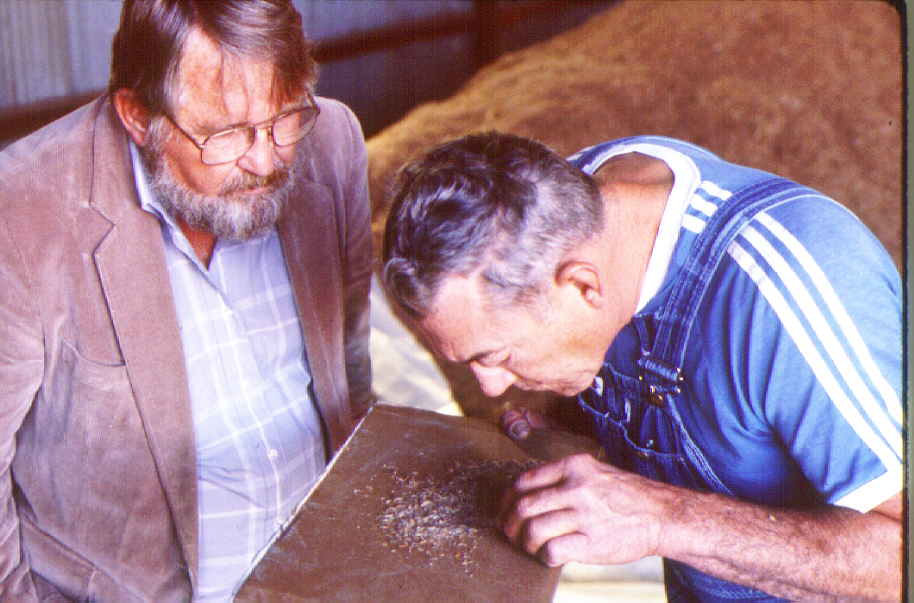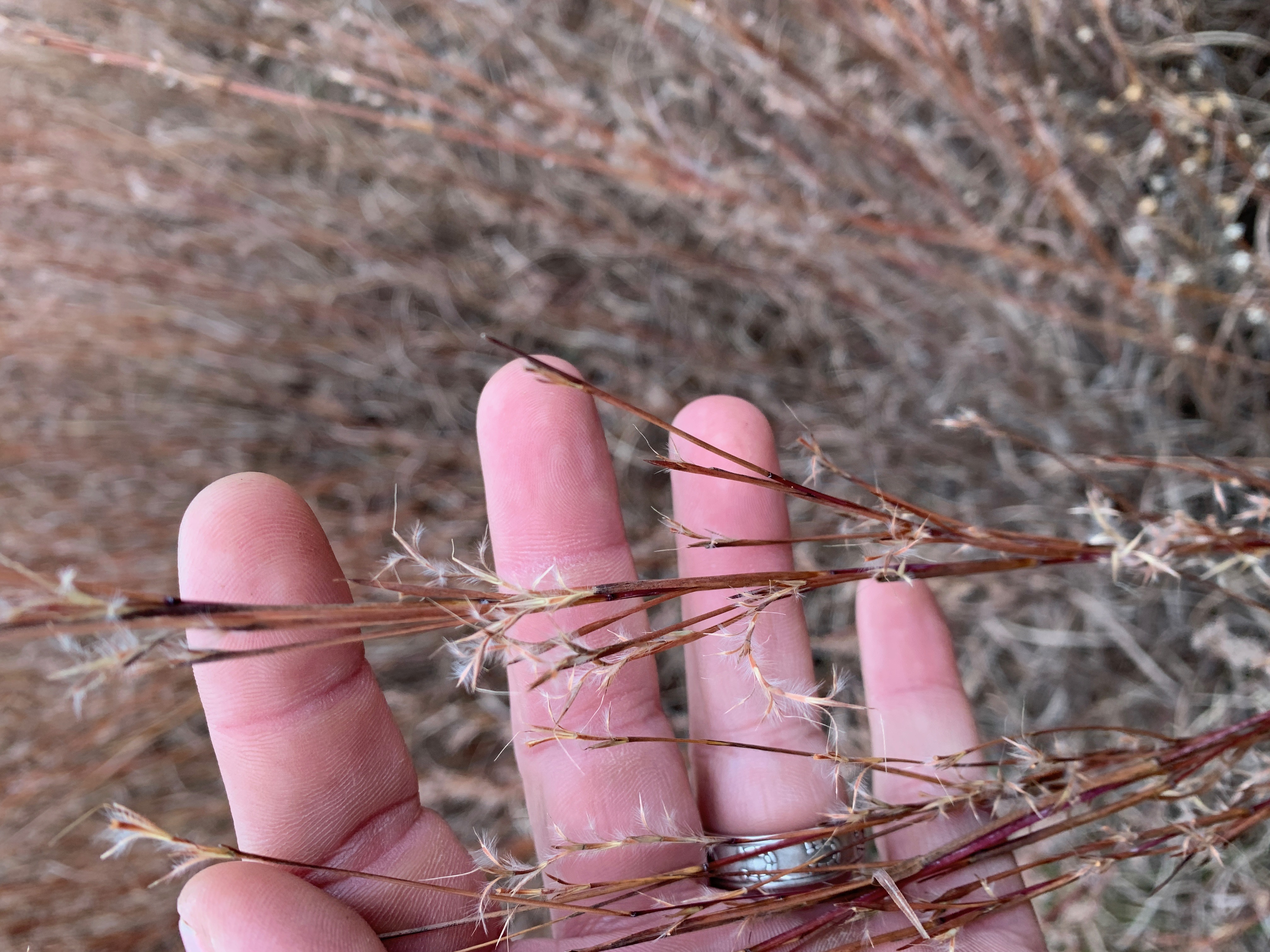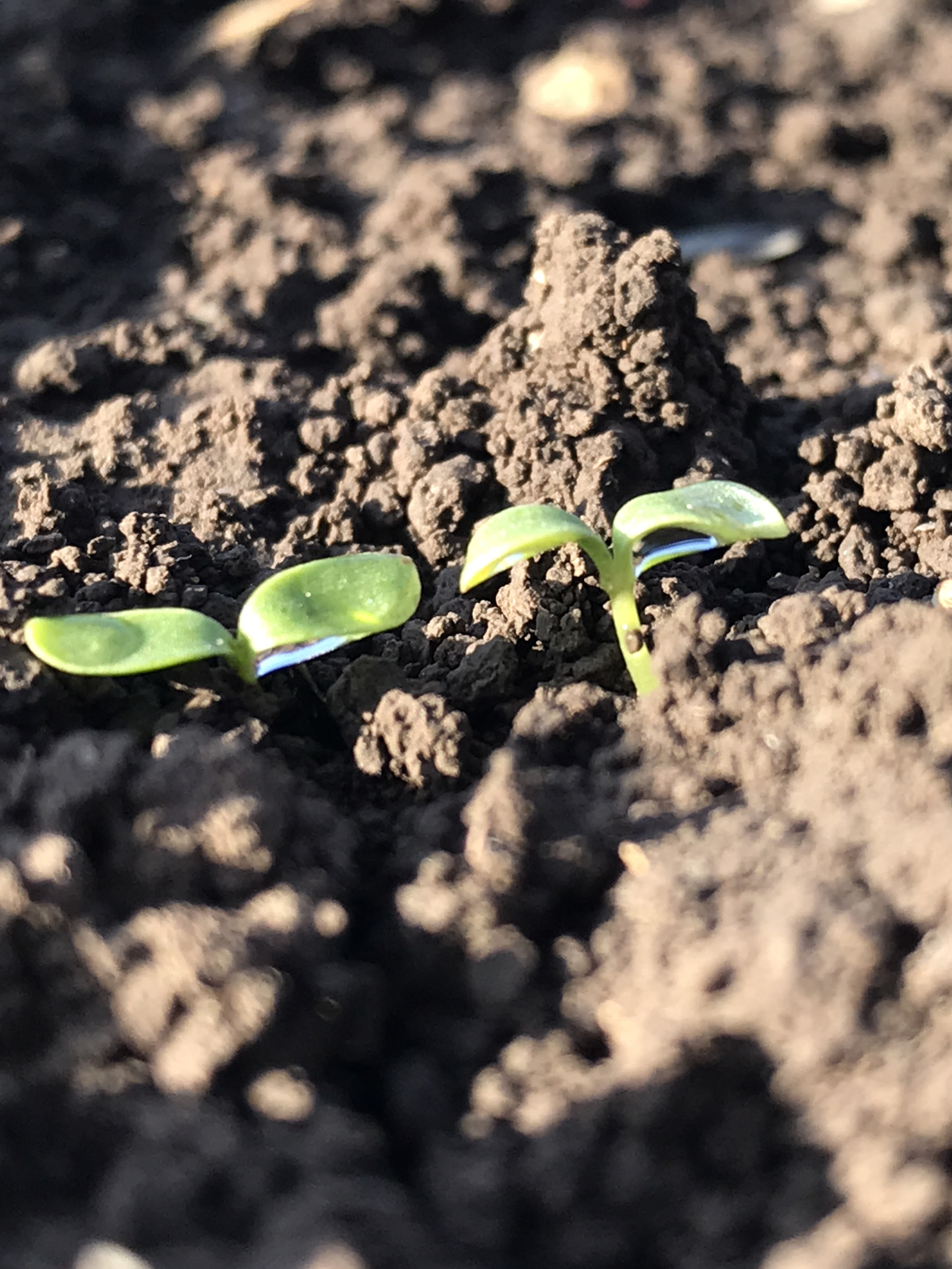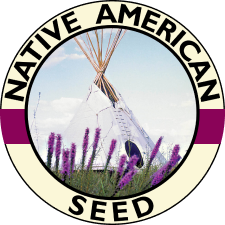Consulting the Elders
Consulting the Elders... What If?
November, 1989. Checking seed viability from a native prairie harvest in the upper blacklands near Greenville. Arnold Davis, the guy with the beard, was retained as a project consultant providing guidance to oversee the restoration of Parkhill Prairie for Collin County Open Space Program (now abandoned). Texas Nature Conservancy and Texas Parks and Wildlife were also partners in the project. Richard Hensley in overalls and Bill Neiman with the headband, both of Native American Seed.
November, 1989. Checking seed viability from a native prairie harvest in the upper blacklands near Greenville. Arnold Davis, the guy with the beard, was retained as a project consultant providing guidance to oversee the restoration of Parkhill Prairie for Collin County Open Space Program (now abandoned). Texas Nature Conservancy and Texas Parks and Wildlife were also partners in the project. Richard Hensley in overalls and Bill Neiman with the headband, both of Native American Seed.
Outgoing mail: To Arnold Davis, an honorable, sweet-pipe-smoking-man who was born in 1930 to a Kansas sodbuster. After living a full life, he quietly
slipped away in Texas, late December of 2000. Here is a letter that our founder Bill Neiman wrote to his dear friend after he moved on from this life.
Hey Arnold, how ya doing? It’s been awhile since we’ve talked… I heard you’re living near RC Mauldin and Dykesterhouse now. Please give them both a warm embrace. I think of you all often. I just took my old 1978 International Harvester grain truck up to RC’s 60-acre Robinson, Texas home place. We got there before the bulldozers arrived, and me and a couple of the guys loaded out the truck with about 12,000 lbs. of roots from the central Texas Indiangrass and the Eastern gamagrass. You can let him know that his roots are safe for now down on our Llano River farm. We couldn’t help but shed a tear, though, knowing the new public school just built on RC’s neighbor’s farm lacked the vision to give young people a chance to touch the purpose of a man’s (and his wife’s) whole life. Now the box houses are being built upon it.
But as I expect ya’ll well know, some time from now when the boxes have fallen down and the concrete foundations and streets begin to crack open, RC and wife Mildred’s work may once again rise to receive the blessings of an ever shining Texas sky. Sometimes I wonder where my own work will end up.

Arnold, remember that time we spent the weekend in your garage and you taught me how to clean those funky ol’ Mexican Hat seeds? 'Geez, how bad I had hay fever from the dust, I soaked many a hanky. I’ll never forget how patient you were with me as I struggled to separate the empty lites from the plump full grains. Sifting and sorting, sniffling and snorting, and tweaking the bottom blast air on that little Hanson 2-screen fanning mill. And you didn’t even chastise me nor dash my young enthusiasm for harvesting the 1196 lbs. of Ratibida columnaris.
To this day, I’m still using that 20-foot screw conveyor you traded to me years later when I cleaned Johnson grass out of your Hill County harvest of Illinois Bundleflower seed. And then that time when we built the Parkhill Prairie in the upper Blacklands. The seeds were all from local native remnants including the Clymer meadow. And the testing lab said our seed was no good due to the same old rules “stating that any mixture submitted for testing which contains any component of less than 5% of the mixture need not be counted”. And how all the people thought $490 dollars per acre was SO expensive. Ol’ Jim Eidson, with the Texas Nature Conservancy now, did his thesis on our work back in the early 1990’s. He concluded we had established 63 species by the end of the third year.
Drifting Apart
Well, I hadn’t been to a prairie meeting in a while, till the July 2003 Native Prairie Association of Texas biennial gather in Austin at Ladybird’s Wildflower Center. Hard to believe how things have changed since you were here. Maybe I am partly to blame, as I have spent so much of my time minding my own business. The early days we shared led my family to dedicate ourselves with 22 other good men and women and their families to helping people restore this corner of the earth we still call Texas. The work is intensive as you know; physical, emotional, and healthy. Almost 24/7 as native seeds wait for no one. We sleep good at night, but sometimes I just need to talk over things. I appreciate it when you share your thoughts and wisdom as one who has gone before.
Arnold, I’m worried that there are many among us who seem to have forgotten the way of it. Some are now saying the purpose of prairie is to be convenient, tidy, uniform, and at once productive and cheap. There is much talk now that the seeds of the prairie should be hastily selected by government agents and non-profit organization volunteers. These seeds are already being judged regionally on their ability to hold tightly onto an upright stalk until such time it may be easily harvested by the “Commercial Native Seed Industry Dealer”. Then presumably, at which point a select few species will be massively produced at an ever-pleasingly lowering price. I’m worried that some how, this time and place has brought forth an unspoken concept that the dilemma of the disappearing prairie will be solved by a licensed agreement between your charitable donations, tax dollars at work, and Wal-Mart.

I understand how easily the people might come to such an illusion, as the masses have been persuaded by appeals to their patriotic consumerism towards “Free Trading” American agriculture down to its knees. We are now unbelievably close to losing forever most of the open pollinated seeds of our major food crops. All because of this silly idea that makes no sense to give businesses the ownership rights to various forms of life made by the great creator.
When is the last time they tried growing tomatoes from the real open pollinated seed? And how about corn now? Can they save their 10-cent genetically modified seeds from a Wal-Mart crop to re-plant for next year? Or do they have to re-buy again and again even though they are hungry to grow wholesome and local?
Arnold, you are one of the people who taught me that by and large, seeds really are a very important part of life. In thinking ahead, I wonder what it would be like if we were meadow mice in the year 2222… we’d be running races against each other because once upon a time Wal-Mart sold the lowest priced meadow dropseeds, fashionably designed and licensed to drop off their stems all at once. It’s Thanksgiving day, our only meal of the year -- and the race is on!
In this year 2222, we’d find that the Wal-Mart commercial seed industry dealer has been so efficiently productive of the selected few species that everybody has forgotten to save the other pieces. The families of seed peoples who once worked so hard to help each do their part in the web of life will have also been forgotten. Under funded and highly taxed by the inherent handicap of working in a for-profit capitalist platform, in which the heartland of the prairie lies, they have come to a dead end as they tried to compete with charitable non-profit organizations and government agencies in the market place. And the masses have come to believe that government programs can save them at a time when the peoples’ government too has been forgotten. At a time of government trying to remember how to secure our homeland.
Getting on the Same Page
So Arnold, I just want to run a couple of ideas by you. What if the people instead can remember how to co-operate? And that they can become aware of many things such as how only diverse ecosystems can provide a constant flow of seeds, falling little by little, to keep all of us healthy. From the daily diets of harvester ants, who sacrifice some of their number for the horny toads, who then must sacrifice a few among themselves for the roadrunner. From the daily needs of meadow mouses and their spouses, who too are asked to sacrifice for the sharp shinned hawk… and to the indefinable list of every creature who creepeth upon the earth, which you now watch over. What if the people remembered that a healthy economy based on conservation and thrift is indeed the most direct pathway to sustainable living? What if government agents and non-profit.orgs remembered that some families are growing native seeds! Especially the ones that have demonstrated their absolute unwillingness to place profit above stewardship and have refused to participate in the continual spread of exotic invasive species. What if a spirit of co-operation fell upon the people to openly discuss among themselves the visions and struggles that might create a grounded focus on whole habitat systems, and how they might be conserved, preserved, expanded and multiplied? Wouldn’t it be a more pleasing path in fact if the .govs and .orgs dedicated their work to saving the discrete, difficult, indeterminate, threatened, endangered, problematic or otherwise inherently rare and/or non-profitable seeds?
What if the .gov/.org /co-op spirited folks really did want the easiest and fastest way to increase whole habitats in their respective local eco regions? And they knew where the remnants were, and encouraged teaching the native values to the local people? As you know, the real purpose of .gov/.orgs used to be about providing assistance in matters of civic concern and education. For example, we gladly give our tax and charitable dollars to provide the following:
Stewardship and landowner education programs which offer species ID,
protection and conservation methods, ecological grazing methods, and
prescribed burning assistance.
Regional education on invasive and non native species and how to
begin holistic control and elimination programs
Promotion and encouragement of local horticultural practices that
teach the use of native species in ecological landscapes and wildlife
habitats
Public educational programs that focus on the whole connectedness of
all habitats/all species; including man and woman as being only a part of the
whole.
Watershed awareness
A constant stream of public service announcements leading to the
accomplishment of the above objectives

Most people today are still unaware and unable to think in the simplest terms about “what is a watershed”. Just exactly where in the watershed does one live? Who will teach them? These are some of the missing cutting-edge parts of the equation. By nature these parts of the equation are very difficult for a for-profit business to provide, although many a for-profit business would be happy to support these activities with some of the money they earn. Who will provide these missing pieces if not .gov,.org or .edu? Needless to say, probably not the Wal-Mart “commercial seed industry dealer.”
Educating and preparing a behaviorally qualified marketplace to receive mixtures of native seeds should become top priority. What if the local regional .gov,.org or .edu called up the harvester families and opened the gates to meeting local landowners? They all work together, moving mixtures of diverse native prairie seeds 10 feet, 10 blocks, 10 miles over the next hill and replanting them in all their mysterious glory.
Can a more sensible pathway be made available for dedicated native seed farmers and harvesters to fairly conduct their business? Could this become an even more pleasing and popular vision of how the future unfolds? All of us know the business part of restoration must be profitable or it will perish just like Grandpa’s farm and his old ways of organic soil conservation.
Arnold, I respectfully request the elders to give forth their wisdom very soon, so that it may enable all the people to become more efficient educators in the ways of prairie. Help us be ready to receive your signs that may be useful guidance tools. Help us to live and work in ways that are pleasing to those of you who have gone before, and those that have yet to come. See ya later, Arnold.
Sincerely,
Bill Neiman
